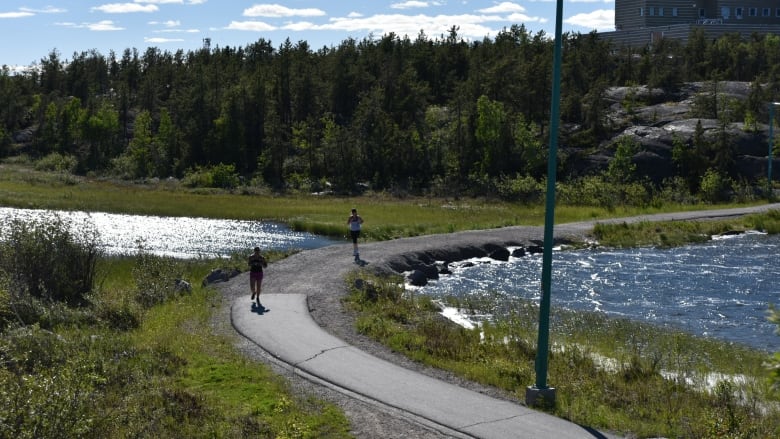No signs: N.W.T. health dept. spreading arsenic message online
'There might be people who aren't aware of a fairly obscure government website,' says Ecology North

Despite a renewed public health advisory from the N.W.T.'s chief public health officer, neither the city or the territorial government plans to put signs up at lakes contaminated with arsenic.
On Tuesday, the Department of Health and Social Services released an up-to-date map of lakes in and around Yellowknife and their levels of dissolved arsenic. Popular recreational areas, like Grace Lake, saw an elevated level of arsenic in the last few months. Rat Lake, near Con Mine, and several bodies of water near the Giant Mine site are also considered "heavily contaminated," Dr. Andre Corriveau told CBC.
- N.W.T. issues health advisory, new map showing arsenic levels in Yellowknife lakes
- 'Nobody's taking responsibility': Board says gov'ts must address Yellowknife's arsenic problem
However, Corriveau said they will not be putting signs up around highly toxic lakes around the city, opting instead to spread the word online.
"We found out that within a short period of time the signs are gone or they're defaced," he said.
"People don't always access the lake at the same spot, so it's really hit and miss and there's costs associated with it."
In April 2016 an official with the Department of Industry, Tourism and Investmentsaid there were plans to put signs up around Frame Lake and other lakes within the city, but signs were only posted at the Prospector Trail, a popular hiking route at Fred Henne Territorial Park, which passed by some of the most contaminated lakes in the area.
Therealso appeared to be some miscommunication earlier this year, whenCorriveau said it was up to the City of Yellowknife to erect signs, while the city told CBC it was committed to installing signs that the chief public health officer provided to the city.
This week, Corriveausaid the latest information will be available on the health department'swebsite. They're also working with the city to make sure the visitor's centre and other places where people get fishinglicenceshave the updated map.
People may not find 'obscure' gov't website
Craig Scott, executive director of Ecology North, says there should be signs at the point of entry of well-known, larger lakes in the city, like Jackfish, Frame and Kam.

"It wouldn't be a difficult thing to put up some kind of signage," he said.
"There might be people who aren't aware of a fairly obscure government website and go out and catch some fish and take them home and eat them, and if that's a public health concern they should be aware."
Scott says it's not only residents who should be warned about the pollutants.
"We have a lot of tourists who come to town and they should be made aware of the legacy contaminants," he said.
"Because we tend to market N.W.T. as a clean and pristine place and that might not necessarily be true."
Corrections
- A previous version of this story said a health official told CBC there were plans to put signs up around Frame Lake. In fact, it was an official with the Department of Industry, Tourism and Investment.Aug 02, 2017 11:02 AM CT
With files from Marilyn Robak












_(720p).jpg)


 OFFICIAL HD MUSIC VIDEO.jpg)
.jpg)



























































































